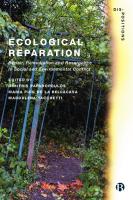
Title: Revitalizing Rainforests: Why Preserving Termites Could Be the Secret to Genuine Forest Restoration
When envisioning rainforest restoration, vibrant green canopies and the sight of individuals planting saplings often come to mind. However, a surprising recent study indicates that the hidden laborers beneath our feet may possess the real key to revitalizing these ecosystems. Researchers have found that termites—frequently viewed as destructive pests—are not recovering rapidly enough in replanted rainforests in Australia. This deficiency may be hindering the health, growth, and long-term viability of these restored ecosystems.
A recent investigation published on May 6 in the Journal of Applied Ecology by a global team of researchers discloses that in certain restored tropical forests, termites are regaining their populations much more slowly than anticipated—potentially delaying nature’s cleanup crew, which is essential for nutrient cycling, decomposition, and even carbon retention. These revelations are driving scientists to examine innovative methods, such as relocating termite colonies and deadwood from thriving forests into newly planted ones.
A Vital Element in Forest Restoration
Reforestation has become increasingly recognized as a nature-based tactic for addressing climate change and biodiversity decline. Traditionally, restoration initiatives have concentrated solely on the act of planting trees. Nonetheless, the new research calls for conservationists and forest managers to acknowledge the vital function of decomposer species—particularly termites and fungi—as fundamental contributors to ecosystem functionality.
“People often believe that simply planting a variety of trees will allow these rainforests to regenerate,” remarked Baptiste Wijas, lead author and postdoctoral researcher at the Cary Institute of Ecosystem Studies. “But should we also focus on restoring other organisms that enable the forest to thrive?”
The study, conducted in Australia’s tropical north, examined three rainforest locations: a mature, old-growth rainforest and two replanted sites, which are four and eight years into their recovery phase. These replanted areas had previously been natural rainforests but were cleared for agricultural purposes in the early 1900s. In recent years, through the efforts of the nonprofit Rainforest Rescue, they have been reforested with indigenous plant species.
Over the course of four years, the researchers placed wood blocks across the sites to observe decomposition rates and the presence of fungi and termites—two primary agents of wood breakdown in tropical ecosystems. Although fungi were observed to be functioning relatively well, even in the youngest forests, termites were nearly absent.
The Importance of Termites
Most individuals recognize termites for the destruction they can cause to wooden structures, yet beyond the few that damage homes, the vast majority act as ecological champions. Termites and fungi undertake crucial tasks in rainforest ecosystems: they decompose wood and dead vegetation, releasing nutrients such as nitrogen and phosphorus back into the soil and surrounding flora. This process is vital for fostering forest regrowth and enhancing carbon sequestration.
In the absence of termites, deadwood decomposes at a much slower pace. This results in fewer nutrients being recycled back into the ecosystem, hampering forest growth and potentially influencing larger food webs.
Key insights from the study included:
– Fungi functioned effectively across all forest types, exhibiting only slightly reduced activity in younger reforested areas.
– Termite activity was significantly diminished in replanted forests compared to old-growth, even 12 years post-restoration.
– The notably slower wood decomposition in these replanted forests indicates possible challenges with nutrient and carbon cycling due to the lack of termites.
“If you have fewer termites, that means more dead wood is just lying around,” remarked Wijas. “And that leads to slower nutrient turnover within the system.”
Transplanting Termites to Enhance Forest Growth
Confronted with these unexpectedly sluggish termite recoveries, the research team has proposed an unconventional yet potentially transformative idea: relocating decomposer communities—including termites and habitats containing deadwood—directly into younger forests.
Old-growth forests naturally contain abundant deadwood that sustains decomposer populations. In contrast, young forests do not yet provide sufficient fallen trees or decaying logs to supply food and shelter for termites.
“A young regenerating forest lacks substantial deadwood. By introducing logs, you provide decomposers with a place to thrive while waiting for the forest to mature naturally,” stated Cary Institute’s Amy Zanne, senior scientist and co-author.
Nevertheless, researchers are also considering an even bolder approach by relocating entire termite mounds. Though unconventional—and perhaps contentious—this daring idea aims to accelerate ecosystem processes that might otherwise take decades to revive.
Shifting Attitudes Toward ‘Pests’
Convincing stakeholders of the crucial role that termites play might pose a challenge. “Many individuals—including forest managers—have a negative perception of termites,” Wijas admitted. However, these small creatures could be among the most essential contributors to rainforest health.
Indeed, termites may play a significant role in carbon sequestration themselves. When they consume wood, not all of it is digested. The indigestible portions are excreted and used to construct termite mounds, which may sequester carbon over extended periods—thereby reducing the amount of carbon released into the atmosphere than